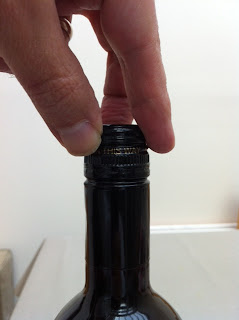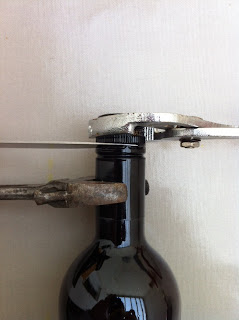 There are plenty of movies with heavy drinking in them - The Lost Weekend (potential attempted suicide) and Leaving Las Vegas (chronically protracted suicide) spring to mind - but let's be candid: you come out of Weekend or Vegas sweatily vowing thenceforward never to consume anything stronger than shandy. They are both poor advertisements for drink.
There are plenty of movies with heavy drinking in them - The Lost Weekend (potential attempted suicide) and Leaving Las Vegas (chronically protracted suicide) spring to mind - but let's be candid: you come out of Weekend or Vegas sweatily vowing thenceforward never to consume anything stronger than shandy. They are both poor advertisements for drink.So at this traditionally difficult time of year, you need something a bit more sanguine, a movie that's not afraid to look booze in the face and still act unconcerned. And in The Philadelphia Story we have a film which is not only incandescent with stardust, witty in a way that no movie has managed since the 1940's, luminously shot and sparklingly acted, but also steeped in alcohol. This is your film.
Does it apologise for drinking to excess? Does it promote it as a pastime? No. It disapproves. But it disapproves so seductively that it's not always easy to tell quite where The Phildelphia Story's personal ideology is located. C. K. Dexter Haven, for instance, a well-heeled yacht designer (played with impeccable generosity by Cary Grant) has previously been married to beautiful, chilly, heiress Tracy Lord (Katharine Hepburn, radiant and terribly funny), but the experience turned him into an alcoholic. Now acceptably dry, he looks on as she attempts to marry for the second time: the proposed husband a worthy goob called Kittredge, who worships the ground she treads on, as well as being ignorant of the fact that, in the right conditions, Tracy Lord will get shitfaced on Champagne and misbehave spectacularly. The conditions - a great society party on the eve of the wedding - duly transpire, and Tracy ends up in the arms of troubled hack journalist (he intends to be a great writer) Macauly Connor (a stupendously thin and passionate James Stewart, his only Oscar-winning performance), both adrift on a sea of drink.
The whole thing is Hollywood at the absolute peak of its powers - brilliantly clever, droll, magical. The emotional entanglements rival anything in Jane Austen. The resolution is as wise as it is heartwarming. Yes, the world is divided into those who like The Philadelphia Story and those who prefer the musical remake, High Society. But even allowing for the charmlessness of Bing Crosby, and Frank Sinatra's inability to act, Society is still a crappy film. The Philadelphia Story is the one which is preserved in the United States National Film Registry as an artifact of especial cultural merit. I rest my case.
And the drink, of course, the drink. By my rough reckoning, somewhere between half and two-thirds of the movie is spent with the characters drinking, getting drunk, being drunk, and recovering from being drunk. It is a drinker's fairytale, in which the cast starts on sherry, moves on to orange juice in a fleeting diversion by the pool ('How about you, Mr. Connor?' asks C. K. Dexter Haven, 'You drink, don't you? Alcohol, I mean?') before swerving into the cocktail hour, followed by a cadenza of endless Champagne. 'More Champagne!' cries the reprobate Uncle Willie at the height of the party, and by God, they get it. 'That was a flock of wine we got away with', Connor says to Tracy in the blinding sunshine of the following morning. 'What about an eye-opener?' Which arrives in the form of one of Uncle Willie's notorious pick-me-ups. 'What is it?' Tracy asks Dexter Haven. 'Just the juice of a few flowers', he says. And, suitably re-lit, they all launch into the final scene, mirth and heartache all round.
It is, therefore, an intoxicating film - figuratively - about figurative and literal intoxication, and the wisdoms that spring from it. It is a film that makes you feel better about drink and the world, which reminds you that Hollywood was once able to make the highest kind of art, and which demands, in the best possible way, that you raise a glass to it.
CJ










